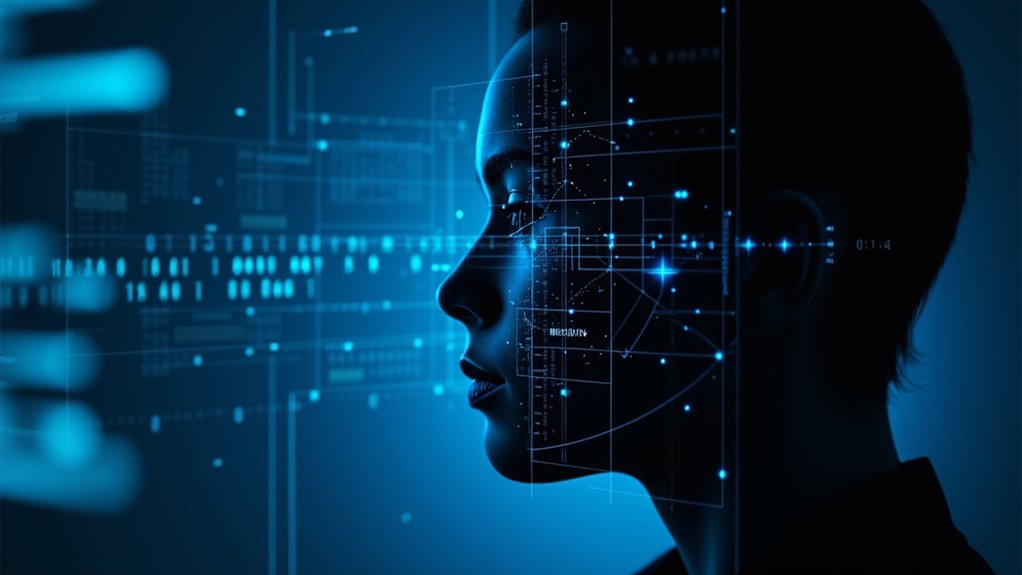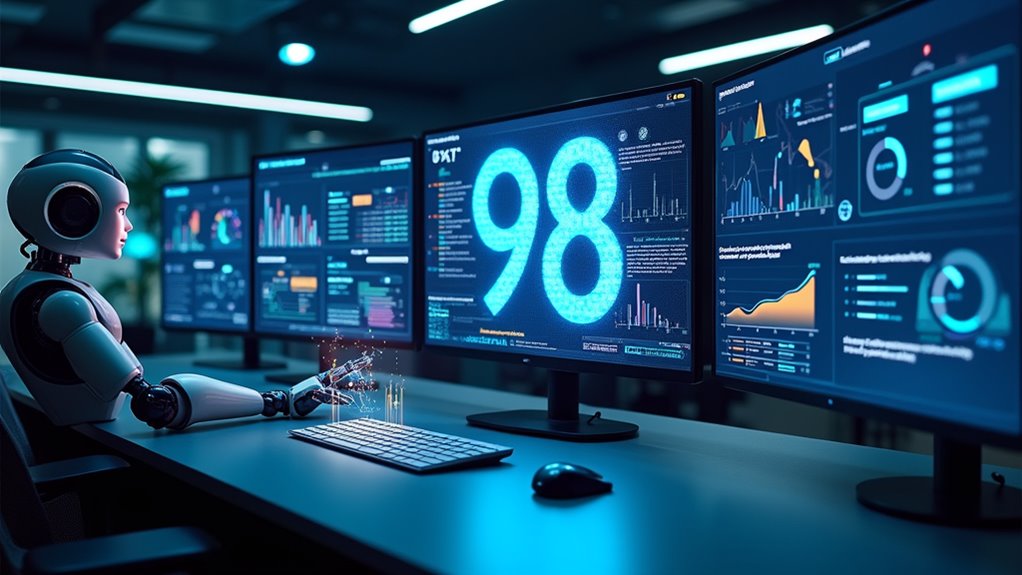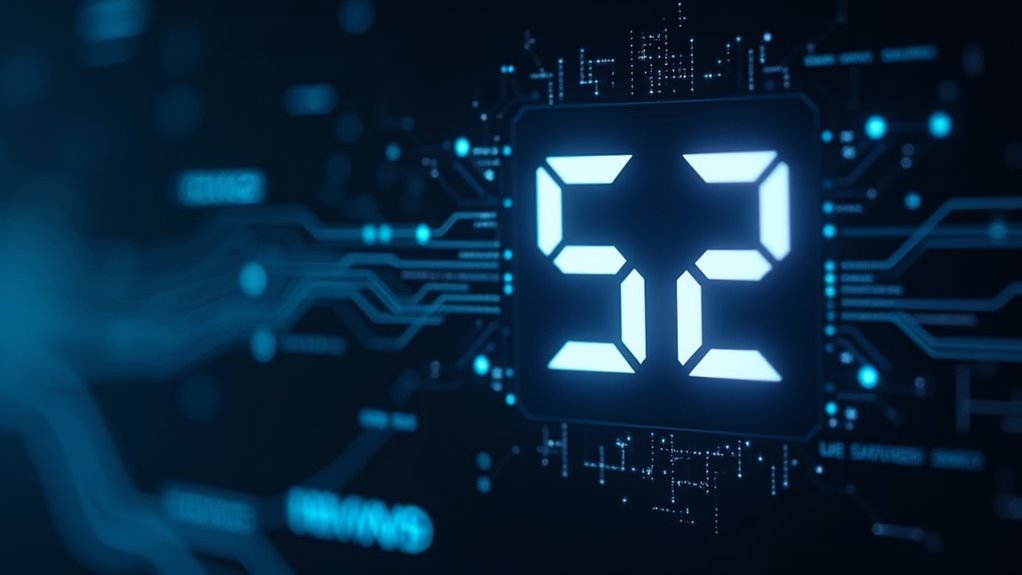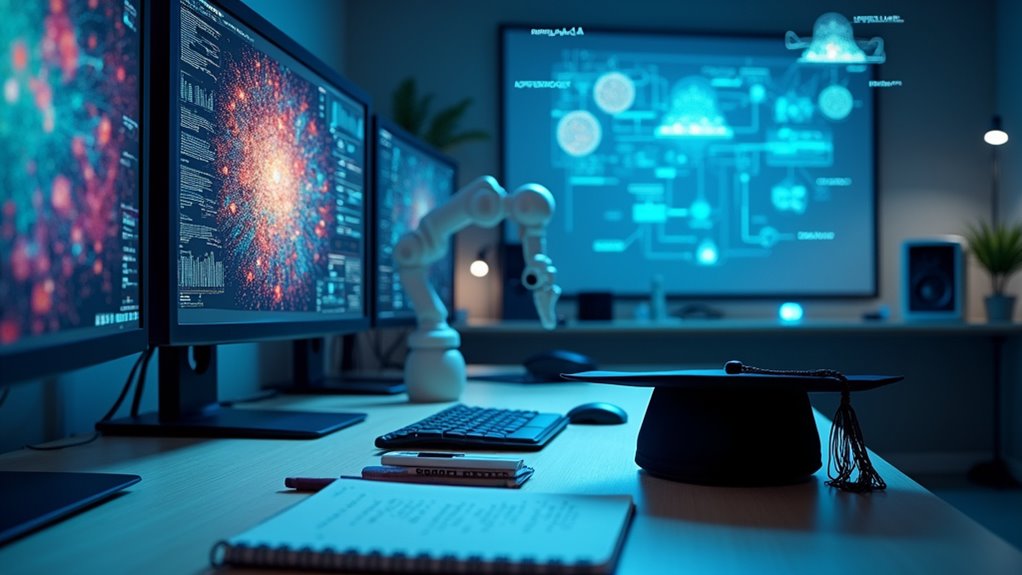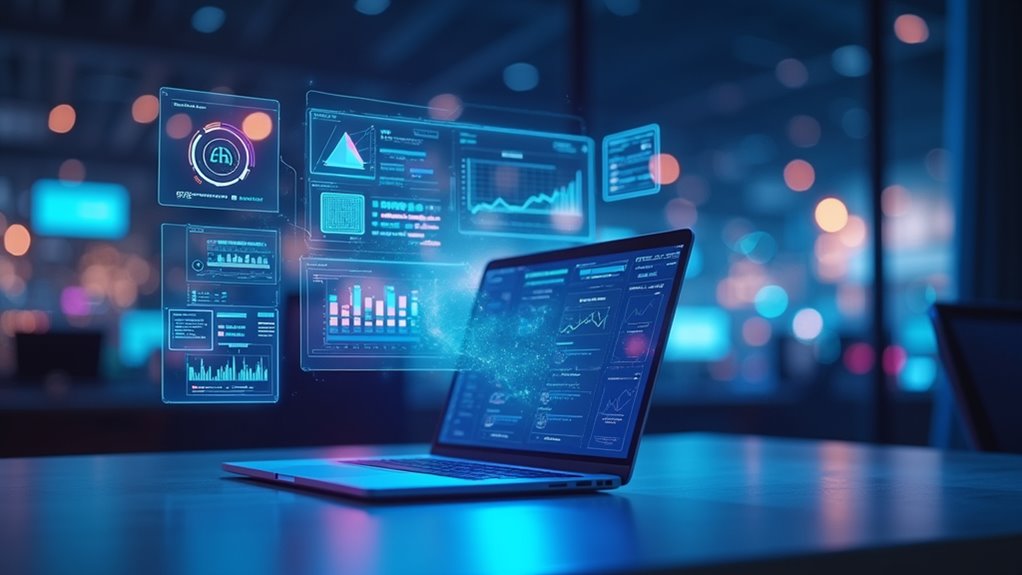People image recognition technology extracts key facial features by mapping distances between eyes, nose shape, and lip contours. Systems identify individuals with 99% accuracy using convolutional neural networks for everything from airport security to social media tagging. Your face effectively becomes an unchangeable biometric password, raising serious privacy concerns. Poor lighting, aging, and facial expressions can confuse these systems, while algorithmic bias creates accuracy problems for underrepresented groups. The ethical implications of this technology extend far beyond mere convenience.
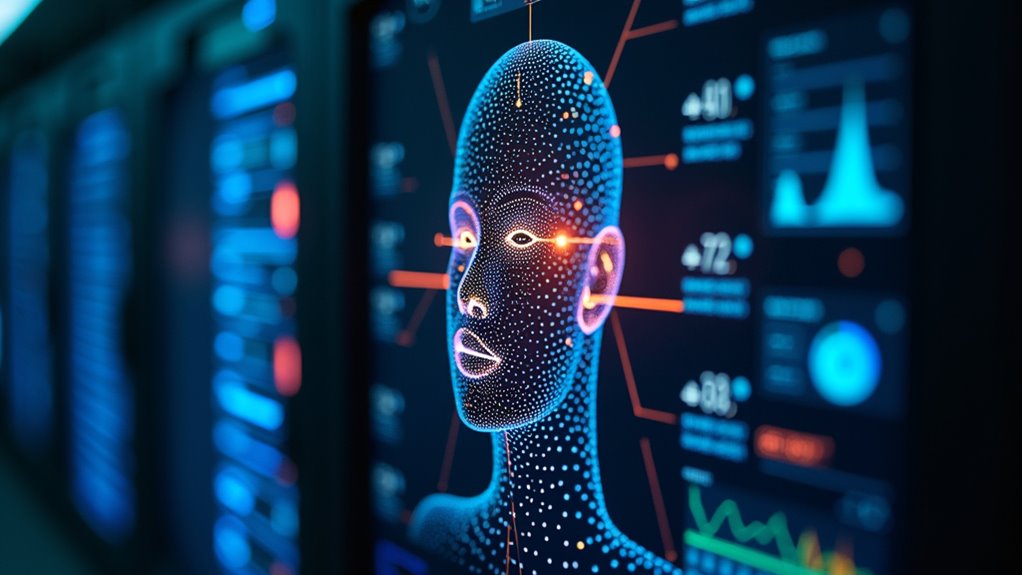
While most people casually snap selfies without a second thought, a complex technological revolution is happening behind the scenes. People image recognition technology silently analyzes your facial features, mapping the distance between your eyes, the shape of your nose, and the contour of your lips. This isn’t just fancy tech—it’s transforming how identity verification works in our digital world. Your face has become your password, whether you like it or not.
Your face is now currency in the digital world—a biometric password you can never change.
Ever wondered how your phone recognizes you even with a new hairstyle? That’s deep learning algorithms at work, constantly improving their accuracy by studying millions of pre-labeled images. These smart systems don’t just see a face; they extract unique characteristics that distinguish you from everyone else. And yes, they’re getting creepily good at it—some algorithms boast over 99% accuracy rates.
The applications extend far beyond accessing your smartphone. Security systems at airports, banks, and government facilities increasingly rely on facial recognition for access control. Social media platforms automatically tag you in friends’ photos. Medical facilities use similar technology to analyze diagnostic images. You’re being recognized everywhere, folks. Modern facial recognition systems now use supervised learning to distinguish between different individuals with remarkable precision. The technology determines identification success based on similarity scores when comparing facial features to known individuals in the database.
But this convenience comes with challenges. Poor lighting, aging, and even your expression can throw these systems off. More concerning are the database biases—if the training images don’t include diverse populations, accuracy suffers dramatically for certain groups. Think of it as technological discrimination baked right into the code.
The technology relies on convolutional neural networks (CNNs)—fancy computer brains designed specifically for image processing. These networks use various strategies including YOLO and Fast RCNN to detect and identify people in fractions of a second. Just like human visual perception, these systems process images through multiple layers of neural networks to recognize patterns and features. Traditional approaches using support vector machines (SVMs) still play a role, but deep learning has revolutionized what’s possible.
Next time you use face access, remember: behind that simple gesture lies an intricate dance of algorithms, data collection, and artificial intelligence. Your face has become valuable currency in the digital age—use it wisely.
Frequently Asked Questions
How Accurate Is Facial Recognition Technology Today?
Modern facial recognition technology achieves impressive accuracy metrics, often exceeding 99% in controlled environments.
However, real-world applications face challenges from lighting, angles, and occlusions that can reduce reliability.
Recent technology advancements like 3D mapping and deep learning have dramatically improved performance, with error rates dropping from 4.1% in 2014 to just 0.08% in recent tests.
Despite these improvements, accuracy still varies across demographic groups and environmental conditions—something to remember before fully trusting these systems.
Can Facial Recognition Identify People Wearing Masks?
Facial recognition systems struggle with masks—it’s like trying to identify someone who’s hiding half their face (surprise, that’s hard!).
Mask detection technology has improved, but accuracy challenges persist. Traditional algorithms depend on seeing the whole face, particularly nose and mouth areas.
Recent advancements have boosted masked recognition from abysmal 20-30% rates to 65-80% in ideal conditions. Still far from perfect!
Security systems now increasingly focus on eye region features when masks are present.
What Privacy Concerns Surround People Image Recognition?
Privacy concerns with facial recognition are numerous, and they should worry you.
Surveillance ethics come into question when systems track people without consent—imagine being watched everywhere you go.
Data security issues? Massive. Your face can’t be changed like a password if databases are breached.
Companies often collect biometric data secretly, store it indefinitely, and share it widely.
The technology’s accuracy problems create additional risks, especially for certain demographics.
Regulations exist, but they’re inconsistent and often toothless.
How Do Companies Store Facial Recognition Data?
Companies store facial recognition data using a variety of storage methods. They typically employ SQL or NoSQL databases to manage millions of biometric identifiers.
Data encryption protects these sensitive faceprints during storage and transmission. Many firms use serialized data storage, cramming all those unique facial measurements into single database columns. Some distribute this information across multiple servers for faster access.
Despite these sophisticated systems, the lack of uniform regulations around this data remains concerning for privacy advocates.
Is Facial Recognition Regulated Differently Across Countries?
Facial recognition laws vary wildly across the globe. China’s implementing consent requirements by 2025, while Belgium’s outright banned private use.
The international regulations landscape is a patchwork of contradictions – San Francisco said “no thanks” completely, but Argentina embraces it for catching criminals.
Europe’s tightening restrictions on biometric surveillance, while India has no direct laws despite widespread use.
Countries are fundamentally playing different games with the same technology, creating a regulatory hodgepodge that businesses must navigate carefully.
